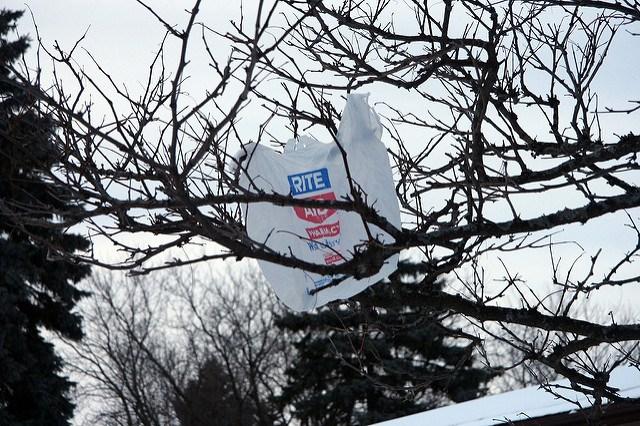
The New York City Council passed a five-cent fee on disposable shopping bags last week. The council voted 28 to 20 in favor of the fee, which includes both paper and plastic bags. It will go into effect in October.
The bill has “limited exceptions” that include take-out and delivery orders from restaurants, as well as bags used for produce and prescription medications. It requires stores to waive the fee for customers who use food stamps, and emergency food providers are exempt. Stores will retain the fees to cover the cost of providing customers with bags. The bill also requires giveaways of reusable bags in local communities.
Disposable plastic and paper bags are costly to New York City, which pays an estimated $12.5 million to transport 91,000 tons of trashed plastic and paper bags to out-of-state landfills. New York City residents use about 9.37 billion disposable bags every year, and most of them are not recycled. The five-cent fee could reduce waste from plastic and paper bags by about 60 percent, the New York City Department of Sanitation projects.
A New York Times op-ed praised the “bill’s reasoning,” calling its “sensible exemptions ... on target.” Although plastic is “ineradicable in modern society,” the op-ed pointed out, attempts to “limit the wastefulness and blight from its overuse” should be made.
New York City Mayor Bill De Blasio also supports the bill. “The council’s legislation strikes the right balance, reducing reliance on single-use bags and incentivizing the use of reusable bags, while safeguarding consumers with some logical exemptions to protect vulnerable New Yorkers,” he said in a statement.
It's not surprising that De Blasio supports the bill given his sustainability plan for the city, called OneNYC. Part of that plan is to go zero-waste by 2030. Last week, De Blasio’s office announced that over 30 New York City businesses agreed to cut the trash they send to landfills in half by June. The businesses participating include Whole Foods Market, Walt Disney Co.’s ABC and Anheuser Busch.
Disposable bags are bad for the environment
Other U.S. cities have implemented similar legislation, including Los Angeles, San Francisco and Washington, D.C. There is a reason why cities are seeking to reduce disposable bag waste. Plastic bags in particular are harmful to the environment. They are one of the main causes of marine pollution.The Pacific Garbage Patch is a collection of bits of plastic floating around the Pacific Ocean, from the west coast of North America to Japan. Since plastics aren’t biodegradable -- they photodegrade instead, meaning they react to sunlight by breaking down into smaller and smaller pieces -- the remnants keep floating around. They are mistaken for food by marine life, which can poison them. The Atlantic Ocean contains a similar collection of plastic called the North Atlantic Garbage Patch.
Plastic bag waste is not limited to the ocean. These bags, of course, also end up in landfills. Reusit.com publishes a list of facts about plastic bags, and their wastefulness stands out. In the U.S., over 3 billion plastic bags, sacks and wraps are produced a year, and 90 percent are thrown away. Estimates of the amount of plastic bags recycled ranges from 0.50 percent to 3 percent.
Manufacturing plastic bags uses vast amounts of natural resources. Plastic bags are made from fossil fuels, like all plastics. It takes about 2.2 billion pounds of fossil fuels and 3.9 billion gallons of fresh water to make 100 billion plastic bags, the amount that Americans use every year, according to the Citizens Campaign for the Environment. Making plastic bags creates a billion pounds of solid waste and 2.7 million tons of carbon a year. Paper bags don’t fare much better as it takes 14 million trees to produce the amount used every year in the U.S.
Image credit: Flickr/Kate Ter Haar

Gina-Marie is a freelance writer and journalist armed with a degree in journalism, and a passion for social justice, including the environment and sustainability. She writes for various websites, and has made the 75+ Environmentalists to Follow list by Mashable.com.














